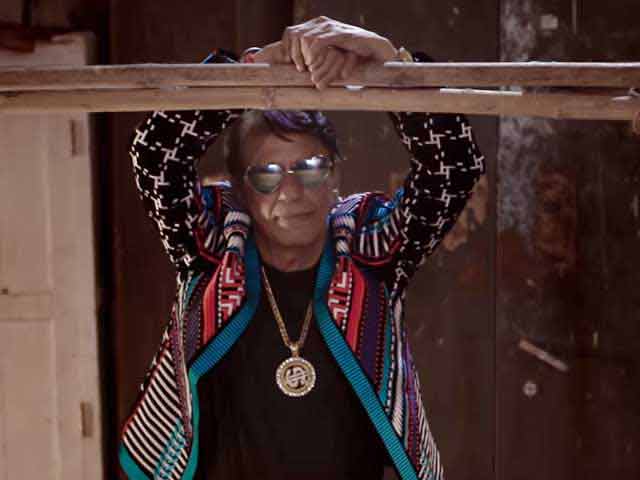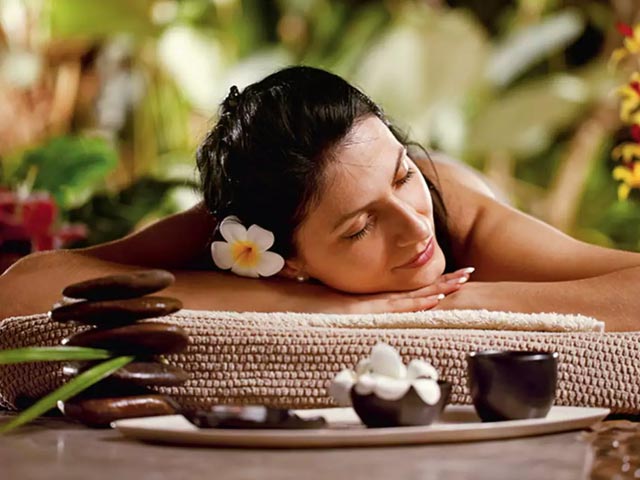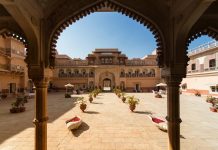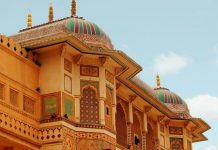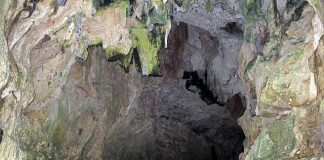Wellness vacations and spa holidays are becoming increasingly popular. There is an array of indulgences that take the shape of spa menus. A good spa session is totally other-worldly, transporting you to heaven, while still keeping you rooted in what surrounds you.
Spas are increasingly beginning to get a sense of place – of being rooted themselves in locally available know-how, ingredients and philosophy. Whether it is coffee from the plantations that surround it or the coconut oil abundantly available – destination-specific experiences add the charm of exclusivity to a wellness getaway. Why just ingredients, some spas even tweak their services to add a flavour of local adventure to the therapies.
Here are 5 Indigenous Spa therapies of India and where you can try them…
Relax Like A Monk

Image Credit: Pixabay
Tibetan Ku Nye Massage, a highly popular treatment at the Ananda Spa in the Himalayas is deeply rooted in the medicinal philosophies of the Buddhist monks and focuses on lymphatic drainage, acupressure that targets the meridians with warmed up Himalayan salt poultices that melt away stress and are infused with cardamom, lavender and jatamansi (spikenard) and topped up with a wonderful head massage. The aim of this treatment is to restore the nervous system and stimulate a free flow of energy within the body. Emerge in a Buddhist state of bliss after this therapy.
A Wild Mud-Bath

Have you ever wondered why pachyderms frequently anoint themselves with mud? The answer my friend, is in what lies beneath. The ground, that is. The use of getting dirty to get beautiful date back to the most ancient times. Ancient Egyptians used clay for purification. Romans used it for relief from physical stress and Greek beauticians used it to restore vitality. In India, mud therapy as elaborated by Ayurveda, is based on the principal of two elements, prithvi (earth) and vayu (air). Mud from various places has different medical properties. Soil of the northern hills is very good for arthritis, spondylitis, sciatica and paralysis; mud of the desert is good for viral infection; mud from the Deccan plateau is a good combatant for diseases for its mineral-rich content.
A spa bang in the midst of tiger country excavates the healing properties of mud in a totally unique way. Aahana Naturopathy Centre at Aahana Resort near Jim Corbett National Park takes pride in elaborating their signature mud therapy programmes, the main ingredient for which is mud excavated from the forest. They dig at least 10-feet ditches deep in the forest to excavate the mineral rich mud. It is then sieved thoroughly and the fine residue is soaked overnight, or at least for a minimum of 8-9 hours. The mud is then dried in the sun for two days and mixed with several herbs and natural ingredients. The combination of clay, aroma oils and natural herbs relaxes muscles and joints, detoxifies, and leaves the skin soft and renewed. One can opt for an Aromatic Herbal Mud Wrap or a Hot Mud Poultice.
They also have a Sand Bath Indulgence programme. The properties of a sand bath mainly lies in the comprehensive therapeutic effects of magnetic therapy (the sand contains brown shell, white coral, limestone and magnetic substances) as well as physical therapy (dryness, high temperature and infrared radiation) The Sand bath can remove obstruction of meridians, relax muscles, tendons and bones, eliminate intractable diseases, promote blood circulation and enhance metabolism. Whilst baking in the sand bath, the team of therapists apply a face pack and administer this trance-inducing head massage. Somebody said something about elephants and memory? It has to do with their daily mud baths!
Mughal Meanderings

Anything mughlai is grand – from their food to their romance. And now, their spa too. Supposedly Asia’s largest spa (at over 99000 sq feet) is the Kaya Kalp, at the Hotel Mughal in Agra. And its signature treatment is an ode to the most iconic figure of love – Anarkali, named after the blossoms of the tree that was introduced to India by Babur, the first Mughal. The rich red fruit – pomegranate – is the theme of the spa and its decor – inlaid into the marble, etched into the tall glass, woven into the tapestry and present on the wall of each of the treatment rooms. Small wonder that the ‘anar’ is the basis of an elaborate Exotic Pomegranate Spa Journey. The exotic fruit is not the only ingredient for treatments that seem they have transcended time and come to you straight from the boudoir of a Mughal empress. What with a Royal Hammam or a Gemstone Massage or a Pearl-Infused Facial – everything about the treatments at Kaya Kalp at Agra – the seat of the Mughal empire – is regal.
Rolling In Peace

Image Credit: tajhotels
Located on a peaceful island, the Taj Coromandel Jiva Spa looks out over a shimmering swimming pool that appears to merge into the ocean. But that is not the only unique aspect of this getaway. Roll the stress knots open using the humble rolling pin or belan, vellana in the local lingo. The massage therapist will manoeuvre a rolling pin along the body to pamper and penetrate tense muscles to make you feel like cookie dough.
The vellana massage promotes blood circulation, improves sensory nerve perception, and does lymphatic drainage. This therapy improves blood circulation, flushes out toxins and lactic acid build-up, leading to improved cellular function. Guests can also choose from in-depth Ayurveda programs, traditional Indian massages, body scrubs, Ashtanga yoga and meditation. Perfect for relaxation and rejuvenation!
Rustic Rumblings

Image Credit: tajhotels
We have all grown up on tales of bravery, courage and valour of the Rajputs. Rana Kumbha was renowned to have fought a dozen swordsmen all by himself. Rana Pratap’s feat of jumping off the ramparts of his fort atop his horse is legendary. Have you ever wondered what could be adding to the strength of the brave men of Rajputana? Well, it could perhaps have been a special type of massage on which most warriors of Rajasthan are reared.
The Pehelwan Maalish is a signature offering at the Jiva Spa at Umaid Bhawan Palace in Jodhpur. This traditional dynamic massage, for centuries, has been a favourite with Indian wrestlers! The therapy can be enjoyed with either the signature aromatherapy oil or mustard oil which is known for pacifying sore, tensed muscles and is excellent for the skin. And after 90 minutes of this blissful therapy, you will be ready to take on the world!
Vacations are meant to rejuvenate you. And if your vacation allows you to undertake a relaxing spa therapy, it is the proverbial cherry on the cake. So check-in and bliss-out!



